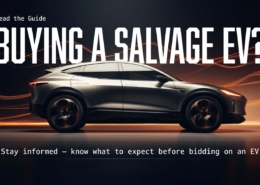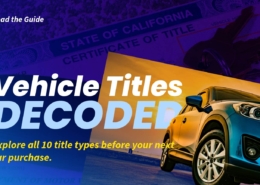 https://auction.ridesafely.com/images/2020/05/win-more-auctions-smart-bidding-banner.jpg
865
1440
RideSafely
/images/2025/01/ridesafely-logo.svg
RideSafely2025-06-20 08:00:252025-06-20 14:21:10Online Car Auction Bidding Strategies
https://auction.ridesafely.com/images/2020/05/win-more-auctions-smart-bidding-banner.jpg
865
1440
RideSafely
/images/2025/01/ridesafely-logo.svg
RideSafely2025-06-20 08:00:252025-06-20 14:21:10Online Car Auction Bidding StrategiesWhen purchasing a vehicle from an auto auction, understanding the “DAMAGE” report is crucial. This report provides a comprehensive overview of any issues and damages identified during the vehicle’s assessment. Recognizing what each damage code signifies can substantially influence your buying decision, especially when dealing with salvage or used cars.
Overview of Damage Reports at Auctions
In auctions, every vehicle is typically accompanied by a damage report. This document lists all the visible and potentially hidden issues found after the vehicle has been evaluated. Visible damages might include dents and scratches from accidents, while more severe, less obvious problems could involve mechanical failures. These reports are invaluable as they give a clear picture of the car’s condition, helping you avoid costly mistakes.
The Benefit of Online Auto Auctions
Online auto auctions offer a distinct advantage by providing these detailed damage reports. Buying directly from a private seller might not afford you the same level of disclosure. Online platforms can save you thousands by facilitating informed decisions, reducing the risk of acquiring a problematic vehicle.
Understanding Common Damage Codes
Detailed Insights into Commonly Used Damage Codes at Auto Auctions
In auto auctions, damage codes provide critical information about the condition of the vehicles up for sale. Understanding these codes can help potential buyers make more informed decisions. Below is an expanded explanation of some of the most commonly used damage codes:
AO – All Over
The “AO” code signifies that the vehicle has sustained damage across most, if not all, areas. This includes the exterior body, and potentially, the interior. Such damage often results from severe accidents or natural disasters.
BC – Biohazardous/Chemical
Vehicles marked with “BC” have been contaminated with hazardous materials, such as biochemical substances or toxic chemicals. These vehicles require special handling and cleaning procedures to ensure safety.
BE – Burn – Engine
The “BE” code indicates that the vehicle’s engine has suffered burn damage, which can affect the vehicle’s functionality and may require significant repairs or a complete engine overhaul.
BI – Burn – Interior
This code is used when the interior components of the vehicle, such as seats, dashboard, or upholstery, have been damaged by fire. Interior burns often require extensive repairs to restore the vehicle’s interior.
BN – Burn
The “BN” code implies that the vehicle has experienced fire damage in general, which can affect various parts of the vehicle, not limited to the engine or interior.
CC – Cash for Clunkers
Vehicles with the “CC” code were part of the Cash for Clunkers program, indicating that they are older and less fuel-efficient, typically intended for scrapping.
DH – Damage History
This code signifies that the vehicle has a history of significant damage, which might have been repaired. It’s crucial to check what types of damage have been recorded previously.
FD – Frame Damage Reported
“FD” indicates that the vehicle has sustained damage to its frame, which can compromise structural integrity and safety.
FR – Front End
The “FR” code is used when the front end of the vehicle has been damaged. This often involves the bumper, front grille, headlights, and hood, which are common in frontal collisions.
HL – Hail
Vehicles with the “HL” code have been damaged by hail. This type of damage typically appears as numerous dents on the hood, roof, and trunk.
MC – Mechanical
The “MC” code refers to any mechanical issues within the vehicle. This could range from engine problems to malfunctioning transmissions or other mechanical components.
MN – Minor Dents/Scratches
This code is used for vehicles with minor cosmetic damage, such as small dents and scratches, which are usually easy to repair.
NW – Normal Wear
The “NW” code denotes normal wear and tear on the vehicle. It’s used for vehicles that have no significant damage but show signs of regular usage.
PR – Partial/Incomplete Repair
Vehicles marked with “PR” have undergone repairs that are either incomplete or partially done. Further work may be required to fully restore the vehicle.
RJ – Rejected Repair
The “RJ” code indicates that a repair attempt was made on the vehicle, but the repair was not accepted or was deemed insufficient by a quality control inspector.
RO – Rollover
This code signifies that the vehicle has been involved in a rollover accident, which may result in extensive damage to the body, frame, and potentially the mechanical systems.
RR – Rear End
The “RR” code is used for vehicles that have sustained damage to the rear end, including the rear bumper, trunk, and possibly the rear lights.
SD – Side
Vehicles with the “SD” code have experienced damage on either side, which can include the doors, side panels, or windows.
ST – Stripped
The “ST” code indicates that the vehicle has been stripped of various parts, often for parts harvesting, leaving it with missing components and systems.
TP – Top/Roof
This code is applied when the top or roof of the vehicle has been damaged, which can occur due to rollover accidents, falling objects, or vandalism.
UK – Unknown
The “UK” code is used when the specific type of damage cannot be clearly identified or is not listed under other predefined codes.
UN – Undercarriage
“UN” indicates damage to the undercarriage of the vehicle, which can affect the frame, exhaust systems, and other components located beneath the body of the car.
VI – Missing/Altered VIN
This code is used when the vehicle’s VIN (Vehicle Identification Number) is either missing or has been tampered with, which can raise concerns about the vehicle’s legality and history.
VN – Vandalism
The “VN” code denotes that the vehicle has been vandalized, which can include broken windows, graffiti, or severe interior damage.
VP – Replaced VIN
“VP” indicates that the original VIN has been replaced, which often necessitates further investigation to ensure the vehicle’s authenticity and legality.
WA – Water/Flood
Vehicles with the “WA” code have been damaged by water or flooding, potentially affecting electrical systems, upholstery, and mechanical components.
Each of these codes helps prospective buyers gauge the extent of damage and the likely repairs needed, playing a crucial role in the decision-making process at auto auctions.
It is essential to note that a single damage code might not fully reflect the overall condition of the vehicle. Conversely, multiple codes on a report do not necessarily mean the vehicle is beyond repair. Always verify the extent of damage personally or through a professional mechanic.
Tips for Using Damage Codes Effectively
While damage codes provide a snapshot of potential issues, they are not exhaustive. They should serve as a preliminary guide rather than a definitive assessment. Here are a few tips to use these codes effectively:
- Inspect Personally: Always inspect the vehicle in person or hire a certified mechanic to get a thorough understanding of its condition.
- Interpret Codes Carefully: Consider both Primary and Secondary damage codes as they offer insights into the severity and scope of damage.
- Verify with Vehicle History: Complement the damage report with a vehicle history report for a more comprehensive overview.
Conclusion: Making Informed Decisions at Auto Auctions
While online car auctions do not guarantee a vehicle in perfect condition, they do provide essential information through damage reports. Before finalizing any purchase, it is advisable to review the vehicle history report and consider a physical inspection. This approach not only ensures you make a well-informed decision but also maximizes the value of your investment in an auctioned vehicle.
By effectively understanding and utilizing damage codes, you can greatly improve your auction experience, ensuring that you purchase not just a vehicle, but also peace of mind. Additionally, you can enlist the assistance of RideSafely for further support.
For further insights on how to navigate online auctions successfully, particularly with salvage vehicles, refer to our detailed guide Unlocking the Secrets of Success in Online Salvage Car Auctions. This resource complements the information on damage codes by providing strategies to enhance your bidding techniques and overall auction experience.
Auto Auction Damage Codes FAQ
What are damage codes in auto auctions?
Damage codes are two-letter abbreviations used in auto auctions to describe the types and locations of damage on a vehicle. These codes help prospective buyers understand the condition of a vehicle before bidding.
How can I interpret these damage codes?
Each damage code signifies a specific type of damage, such as ‘FR’ for front-end damage or ‘MC’ for mechanical issues. It’s essential to familiarize yourself with these codes to assess the vehicle’s condition accurately.
Are vehicles with damage codes worth buying?
Vehicles with damage codes can be worth buying if the cost of repair is manageable and the damage doesn’t compromise the vehicle’s long-term functionality. Always consider the extent of damage and repair costs when bidding.
How reliable are the damage reports at auto auctions?
While damage reports provide a good indication of a vehicle’s condition, they may not always capture all existing issues. It is advisable to inspect the vehicle personally or hire a professional to ensure a comprehensive evaluation.
Can I see the damage codes before bidding at an auction?
Yes, damage codes are typically listed in the vehicle’s damage report available before bidding starts at an auction. This allows potential buyers to make informed decisions based on the extent and type of damage.
What should I do if a vehicle has multiple damage codes?
If a vehicle has multiple damage codes, assess each code’s implications on the vehicle’s overall condition and repair costs. Sometimes, multiple minor issues can be fixed easily, whereas a single severe issue might be a dealbreaker.
Is it possible to get a vehicle with no damage codes at an auction?
Yes, it is possible to find vehicles with minimal or no damage codes at auctions, though they might be less common. These vehicles usually command higher prices due to their better condition.
How do I get help with decoding damage codes and inspecting vehicles?
You can enlist services like RideSafely, which assist buyers in interpreting damage codes to ensure a safer and more informed purchase.





